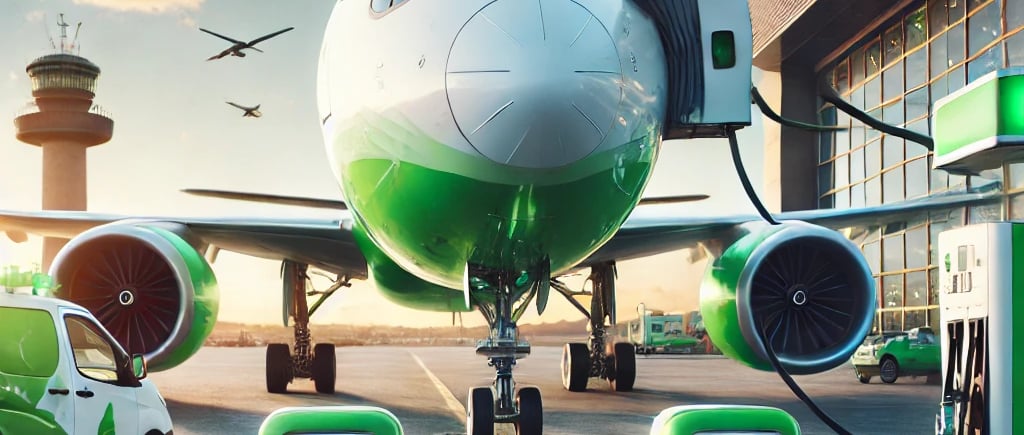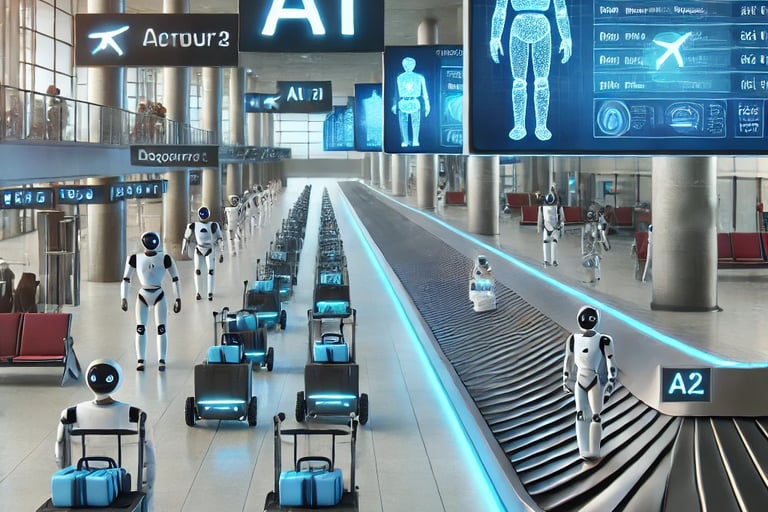THE FUTURE OF COMMERCIAL AVIATION: INNOVATIONS AND TRENDS
Discover how technological and sustainable advancements are reshaping the aviation industry. From green fuels to futuristic aircraft designs, explore what’s next for flying.
Ing. Rodrigo Olivera C.
1/2/20252 min read


THE FUTURE OF COMMERCIAL AVIATION: INNOVATIONS AND TRENDS
Discover how technological and sustainable advancements are reshaping the aviation industry. From green fuels to futuristic aircraft designs, explore what’s next for flying.
1. Sustainable Fuels: The Transition to Green Aviation
One of aviation's greatest challenges is reducing its carbon footprint. Sustainable aviation fuels (SAF) have emerged as one of the most promising solutions. Produced from organic waste, such as used oils or algae, these fuels can reduce carbon emissions by up to 80% compared to traditional kerosene.
Companies like Airbus and Boeing are leading research efforts and collaborating with airlines to increase SAF adoption. However, significant challenges remain, such as limited availability and high costs, which require governmental support and international collaboration to overcome.
2. Electric Aviation: The Path to Cleaner Skies
Electrification of aviation promises to revolutionize short-haul flights. Companies like Rolls-Royce and startups like Eviation are developing electric aircraft that could drastically reduce aviation's environmental impact.
Eviation's "Alice" prototype, a fully electric aircraft, has already conducted successful test flights, proving that zero-emission flights are feasible. While these technologies are still in their infancy, they are expected to play a crucial role in reducing sector emissions and creating new connectivity opportunities for remote regions.
3. Future Aircraft Design: Beyond Convention
Aircraft design is rapidly evolving, with futuristic concepts aimed at improving aerodynamic efficiency and passenger experience. A notable example is the "Flying-V" by Delft University of Technology in collaboration with KLM. This design integrates the cabin, cargo holds, and fuel tanks into the wings, reducing fuel consumption by up to 20%.
Another notable trend is the development of hypersonic aircraft, which could drastically cut flight times. Although costs and technological challenges remain significant, companies like Boom Supersonic are advancing toward a renaissance of supersonic travel with a focus on sustainability.
4. Artificial Intelligence and Digitalization: Operational Efficiency
Artificial intelligence (AI) and digital technologies are transforming every aspect of aviation. From predictive aircraft maintenance to optimizing flight routes, these tools are improving efficiency and reducing costs.
Smart airports are also emerging, utilizing AI to streamline baggage handling and enhance passenger experiences through automated processes. As digitalization progresses, airlines and airports are expected to become more resilient and sustainable.
Conclusion
The future of commercial aviation is defined by a commitment to sustainability and innovation. Sustainable fuels, electrification, bold designs, and technological advancements are shaping a new era in the skies. While challenges remain significant, global collaboration and investment in research and development will be key to achieving more efficient, eco-friendly, and accessible aviation.
The journey toward this future is already underway, with each innovation bringing us closer to a world where flying is not only synonymous with connection but also with responsibility for the planet.


We Empower Aviation in Mexico & U.S.A.
CONTAC US
+52 5666118911
© 2024. All rights reserved.


